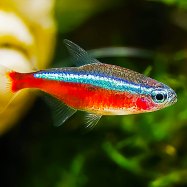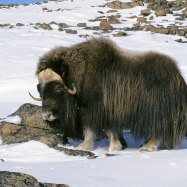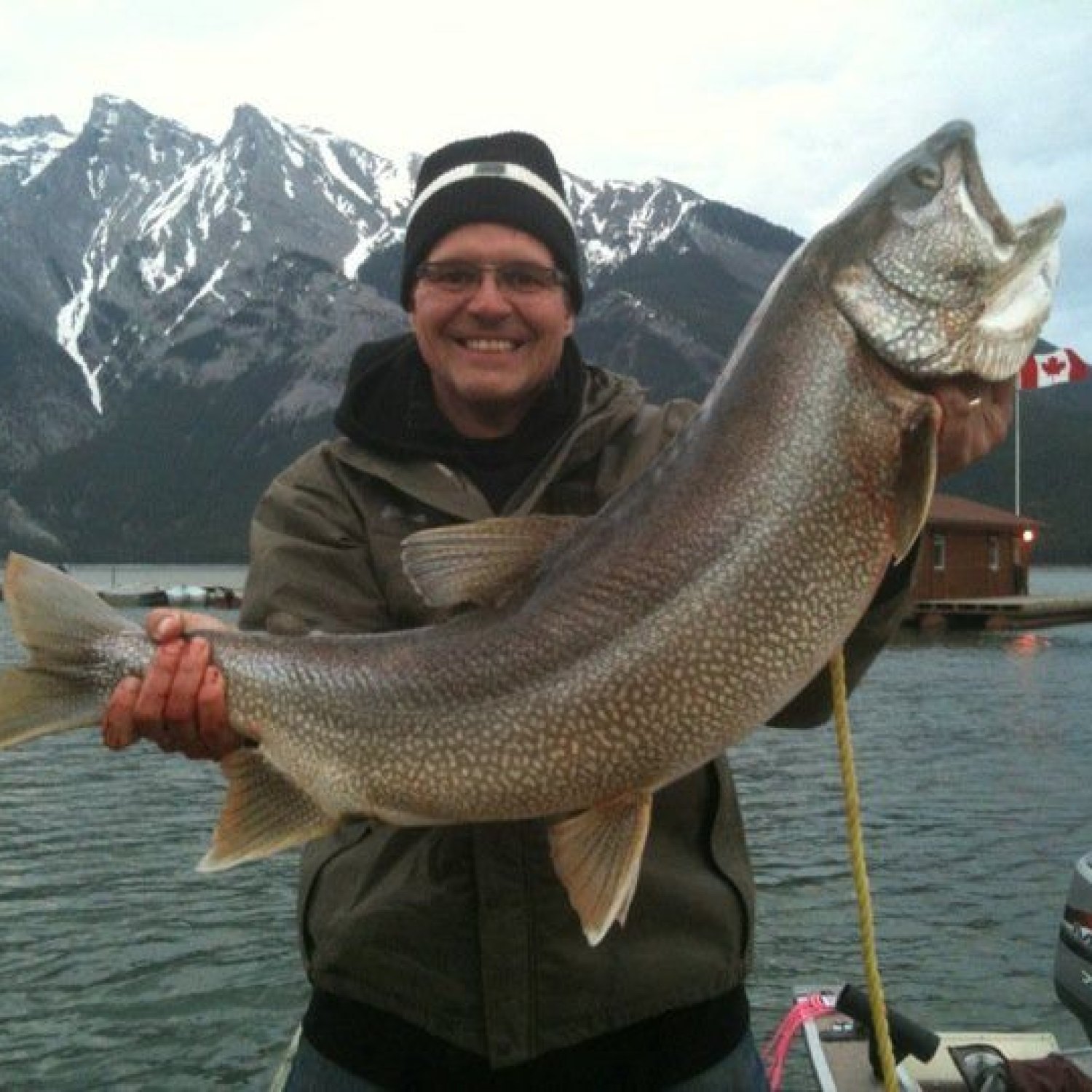
Lake Trout
Up to 40 inches
Lake trout, a popular game fish, can grow up to 40 inches in length and can be found in the freshwater lakes of North America. They belong to the Salmonidae family and have a slender, streamlined body shape, perfect for their fast swimming capabilities. These beautiful fish are a favorite among anglers and are known for their delicious taste.
Animal Details Summary:
Common Name: Lake Trout
Kingdom: Animalia
Habitat: Freshwater lakes
The Majestic Lake Trout: An Icon of North American Freshwater Lakes
The quiet and serene waters of freshwater lakes in North America are home to a remarkable creature that has been a part of the ecosystem for centuries. This creature, known scientifically as Salvelinus namaycush, is commonly referred to as the Lake Trout and is a beloved species by many.Despite its name, the Lake Trout is not a trout at all. It is actually a type of char, which is a member of the Salmonidae family Lake Trout. This family also includes other well-known fish like salmon and whitefish. The Lake Trout, however, has its own unique characteristics that make it stand out among its aquatic counterparts.
A Fish of Many Names
The Lake Trout, also known as Great Lakes Trout or Mackinaw, has earned its common names due to its natural habitat. As its name suggests, this fish is primarily found in North American freshwater lakes, particularly the Great Lakes region. This includes Lake Superior, Lake Michigan, Lake Huron, Lake Erie, and Lake Ontario.However, the Lake Trout is not limited to just these lakes. Its geographical distribution spans from Canada, in provinces such as Ontario and Quebec, down to the northern parts of the United States, including Alaska and New England.
A Look at the Physiology
Like all members of the Salmonidae family, the Lake Trout has a slender and streamlined body shape, with pointed fins and a forked tail. This allows them to move swiftly through the water, making them ideal predators Ladybug.As for its size, the Lake Trout can range from 20 to 40 inches in length and can weigh up to 40 pounds. However, in some areas, it has been known to grow even larger, with some weighing over 100 pounds.
One of the most distinct features of the Lake Trout is its coloration. On top, it is usually dark green or grayish, fading to a silvery color on the sides. This helps them blend in with the dark depths of the freshwater lakes they inhabit, making them inconspicuous to their prey.
The Solitary Hunter
As carnivorous creatures, Lake Trout primarily feed on smaller fish like smelt, whitefish, and suckers, as well as insects, crustaceans, and mollusks. They are known to be solitary hunters, patiently waiting for their prey to swim by before swiftly attacking it with their sharp teeth.Lake Trout are also known for their ability to migrate long distances in search of food. During the winter months, they can be found in shallower waters, where their prey is more abundant. But as the seasons change, they venture into deeper waters to hunt and mate.
A Rich History
The Lake Trout has long been an essential animal for both humans and the environment. Indigenous people in North America have relied on this fish as a food source for centuries. However, with commercial fishing and the introduction of non-native species, their population has been significantly affected.Thankfully, conservation efforts and regulations have been put in place to preserve the Lake Trout population. These efforts have been successful, with the species being listed as Least Concern on the IUCN Red List.
The Lake Trout and Natural Language Processing
Natural Language Processing (NLP) is a field of artificial intelligence that involves teaching machines how to understand human language. It has significant applications in various industries, including marketing, customer service, and healthcare.The Lake Trout, being a beloved species among North Americans, is also the subject of many online conversations. This makes it an ideal candidate for NLP research, as it can help improve language models and understand human behavior better.
The Impact on the Ecosystem
Aside from providing a source of food for humans, Lake Trout also plays a crucial role in the ecosystem of freshwater lakes. As top predators, they help regulate the population of smaller fish, preventing overpopulation and maintaining a balance in the food chain.Additionally, as they migrate, they also disperse nutrients and help fertilize the lake bed, contributing to the growth of aquatic plants. This, in turn, benefits other species that rely on these plants for survival.
In conclusion, the Lake Trout is not just a fascinating fish species but an important part of the North American ecosystem. Its distinct features and habits make it a popular subject of study, and its positive impact on the environment cannot be underestimated. As long as conservation efforts continue, we can all continue to admire and appreciate this majestic creature for generations to come.

Lake Trout
Animal Details Lake Trout - Scientific Name: Salvelinus namaycush
- Category: Animals L
- Scientific Name: Salvelinus namaycush
- Common Name: Lake Trout
- Kingdom: Animalia
- Phylum: Chordata
- Class: Actinopterygii
- Order: Salmoniformes
- Family: Salmonidae
- Habitat: Freshwater lakes
- Feeding Method: Carnivorous
- Geographical Distribution: North America
- Country of Origin: Canada
- Location: Freshwater lakes in North America
- Animal Coloration: Dark green or grayish on top, fading to silvery on the sides
- Body Shape: Slender and streamlined
- Length: Up to 40 inches
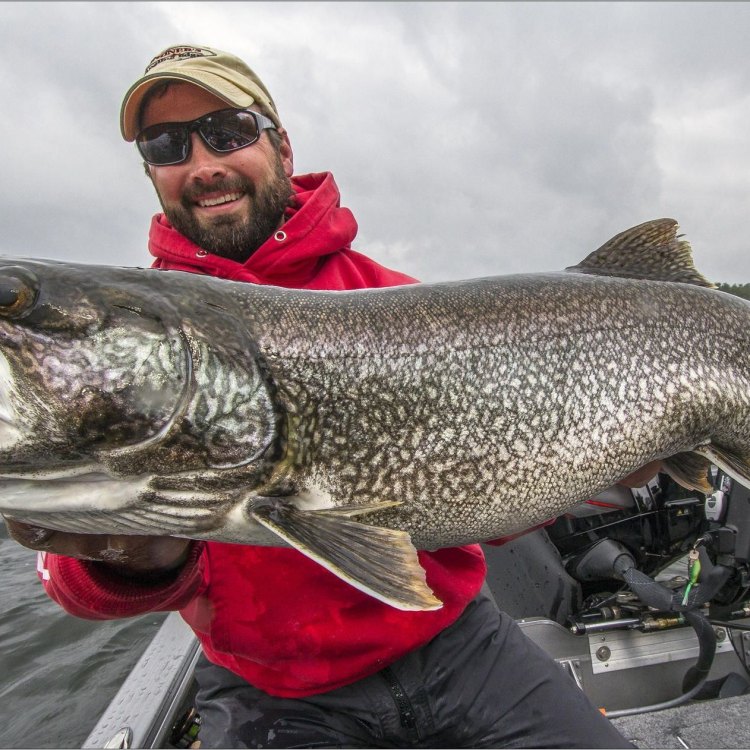
Lake Trout
- Adult Size: 20-30 inches
- Average Lifespan: 10-20 years
- Reproduction: Sexual
- Reproductive Behavior: Spawning
- Sound or Call: None
- Migration Pattern: Lake trout may migrate to spawning sites in rivers or moving waters during the spawning season
- Social Groups: Solitary
- Behavior: Nocturnal
- Threats: Overfishing, habitat destruction, pollution
- Conservation Status: Least Concern
- Impact on Ecosystem: Lake trout are important predators in their ecosystems
- Human Use: Sport fishing, commercial fishing
- Distinctive Features: Large size, deeply forked tail, light colored spots on a dark background
- Interesting Facts: Lake trout can live for more than 35 years. They are one of the largest freshwater fish species in North America.
- Predator: Humans, bears, eagles
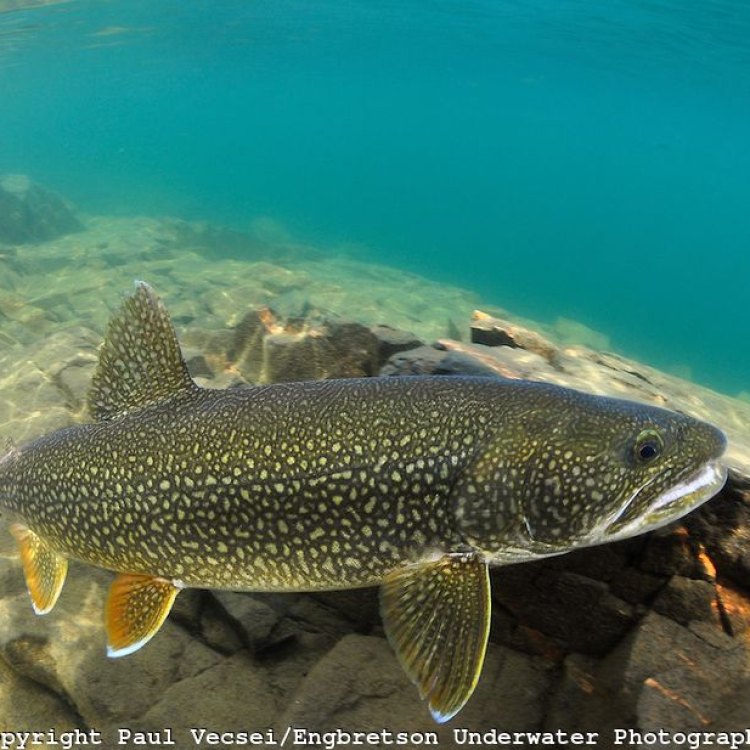
Salvelinus namaycush
The Mighty Lake Trout: A Fascinating Species of Freshwater Fish
The vast and serene landscape of North America is dotted with countless lakes, rivers, and streams that are home to a diverse array of aquatic life. Among these creatures, the lake trout stands out as one of the most fascinating and iconic species. With its large size, distinctive features, and interesting behavior, the lake trout has captured the imagination of fishers, scientists, and nature enthusiasts alike.In this article, we will delve deeper into the world of lake trout, exploring its unique characteristics, behavior, and impact on the ecosystem PeaceOfAnimals.Com. From its reproductive habits to its human uses, we will unravel the secrets of this mighty freshwater fish and understand its significance in our environment.
The Basics: Adult Size and Average Lifespan
Lake trout, also known as Salvelinus namaycush, is a species of freshwater fish that is native to North America. They can be found in various bodies of water, including lakes, rivers, and streams in the Great Lakes region, as well as in the northern parts of Canada and Alaska. As their name suggests, they are commonly found in lakes, although they can also be found in rivers and other moving waters.One of the distinguishing features of the lake trout is its large size. On average, adult lake trout can reach a length of 20-30 inches, with some specimens growing up to 4 feet in length and weighing over 50 pounds. This makes them one of the largest freshwater fish species in North America.
Apart from their impressive size, lake trout are also known for their long lifespan. On average, they can live for 10-20 years, although some individuals can live for more than 35 years Luna Moth. This is due to their slow growth rate, with females not reaching sexual maturity until they are 6-8 years old, and males not until 3-4 years old.
Reproduction and Reproductive Behavior
The reproduction of lake trout is a fascinating and crucial aspect of their life cycle. Like most fish, they are sexually reproductive, meaning they require a male and female to produce offspring. During the spawning season, which typically occurs in the fall, male lake trout will chase and court potential mates. Once a pair has formed, they will swim to a suitable spawning location.Lake trout primarily reproduce through a process called spawning. This involves the female laying her eggs in a depression on the lake bottom, and the male fertilizing them with his sperm. The females can lay thousands of eggs, which are then covered with rocks and debris to protect them from predators. After spawning, both male and female lake trout may return to deeper waters to recover from the physically demanding process.
Interestingly, lake trout are not known to make any sound or call during their reproductive behavior. This is in contrast to other fish species, such as the drum fish, which produce loud drumming sounds during spawning. The reason for this is still unknown and remains a mystery.
Migratory Patterns and Social Groups
Lake trout are known to be solitary creatures, preferring to spend most of their time alone. However, during the spawning season, they may migrate to spawning sites in rivers or other moving waters. This behavior is also observed in some males who will migrate to shallow waters to find potential mates.Apart from seasonal migration, lake trout do not exhibit any other social behavior or form any distinct social groups. This is due to their solitary nature, as well as the vast and often isolated environments in which they live.
Nocturnal Behavior
Another interesting aspect of lake trout behavior is their nocturnal nature. They are primarily active at night, searching for prey in the cover of darkness. During the day, they will often hide in deeper waters or under rock formations to avoid predators.This nocturnal behavior also means that lake trout are often caught by fishers at night. They are known to be challenging to catch due to their size, strength, and nocturnal habits, making them a favorite among experienced fishers.
Threats and Conservation Status
Like many other species in our environment, lake trout face various threats, including overfishing, habitat destruction, and pollution. Historically, overfishing has had a significant impact on lake trout populations, leading to a decline in their numbers. In some areas, commercial fishing has also played a role in the depletion of their populations, with the demand for their meat and eggs for human consumption.Habitat destruction is another significant threat to lake trout. With the increase in human activities, such as damming, construction, and development, the natural habitats of lake trout are being compromised, affecting their ability to reproduce and thrive.
Pollution is also a major concern for lake trout populations. Agricultural and industrial pollution, as well as the introduction of non-native species, can have detrimental effects on the water quality and health of these fish. Polluted waters may also lead to the accumulation of toxins in the fish's tissues, posing a risk to both them and the predators that feed on them.
Despite these threats, the conservation status of lake trout is currently considered "Least Concern" by the International Union for Conservation of Nature (IUCN). This is due to recent efforts in implementing conservation measures, such as stricter fishing regulations, habitat restoration, and pollution control.
Impact on the Ecosystem
Lake trout play a vital role in their ecosystems as apex predators. As adults, they feed on a variety of prey, including smaller fish, insects, and crustaceans. Their presence helps to maintain a balance within the food web, keeping prey populations in check and preventing potential overpopulation.Moreover, lake trout populations are also an essential indicator of the health of their environment. Their sensitivity to pollution and habitat degradation makes them a crucial bioindicator species. By monitoring their populations and health, scientists can assess the overall health of the ecosystem.
Human Use and Interesting Facts
Lake trout have been an important source of food and recreation for humans for centuries. As mentioned earlier, they have been overfished for their prized meat and eggs, which are considered a delicacy by some. In some areas, commercial fishing for lake trout is still practiced, while in others, they are mainly caught for sport fishing.Apart from their uses by humans, lake trout also possess some intriguing characteristics and behaviors. One interesting fact is that they can live for more than 35 years, with some individuals surviving for up to 50 years. This is due to their slow growth rate and longevity, making them one of the longest-living freshwater fish species.
In addition, lake trout have distinct physical features that make them easily recognizable. They have a deeply forked tail, which helps them swim and maneuver through the water. They also have light-colored spots on a dark background, giving them a striking appearance that sets them apart from other fish species.
Predators of Lake Trout
While lake trout are powerful predators in their ecosystems, they are not without their own predators. Humans, particularly fishers, are known to target lake trout for their size and quality meat. Apart from humans, bears and eagles are also known to prey on lake trout, particularly during the spawning season.Even with these predators, lake trout populations have been able to sustain themselves and remain a crucial part of their ecosystems. However, it is essential to maintain a balance between human use and conservation efforts to ensure the continued survival of this majestic species.
In Conclusion
In summary, lake trout are a fascinating and important species of freshwater fish in North America. Their large size, distinctive features, unique behavior, and longevity make them a beloved and sought-after species by fishers and nature enthusiasts alike.However, their populations face numerous threats, and it is crucial to implement conservation measures to safeguard their survival. By understanding and appreciating the role of lake trout in their ecosystems, we can work towards preserving their habitats and maintaining a balance in our environment. So, the next time you come across a lake trout, take a moment to admire its beauty and significance in our natural world.
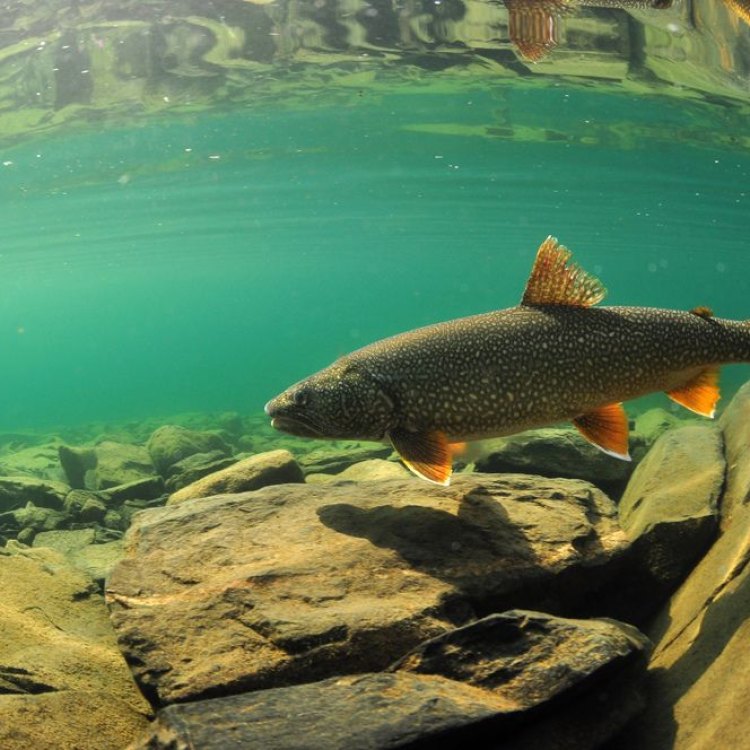
The Majestic Lake Trout: An Icon of North American Freshwater Lakes
Disclaimer: The content provided is for informational purposes only. We cannot guarantee the accuracy of the information on this page 100%. All information provided here may change without prior notice.






